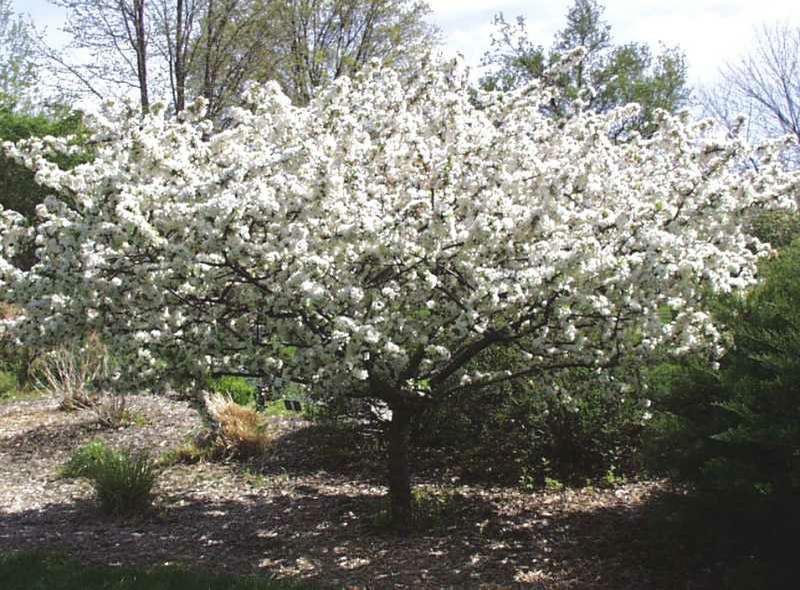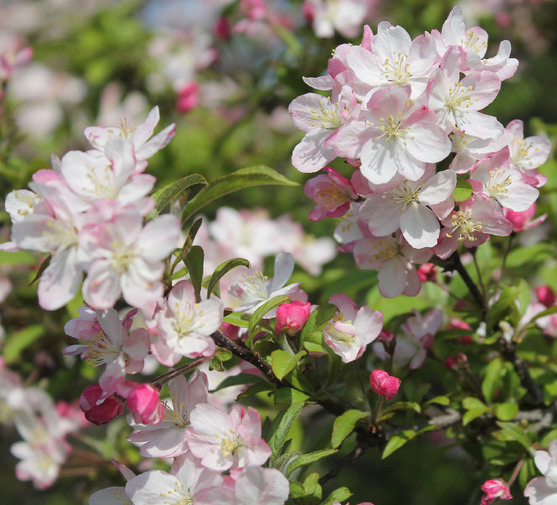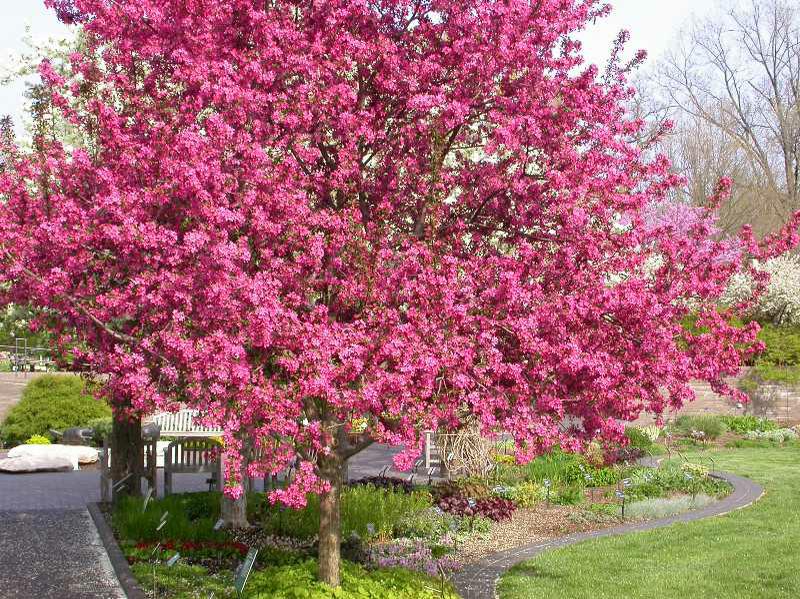Name That Tree
By Gretchen Spencer, Fairfax Master Gardener

Malus sargentii

Crabapple blossoms
Crabapple trees are susceptible to four diseases. They include the bacterial disease, fireblight, and three fungal diseases: scab, rust and powdery mildew. While there are cultural practices and chemical sprays available for mitigating these diseases, the best practice is to plant trees that are disease resistant. Crabapple trees may also be bothered by Japanese beetles feeding on the leaves. Some varieties are less prone to Japanese beetles. There are several Internet sources that identify disease and insect resistant cultivars and they are listed below. Alternatively, your local nursery can also provide disease and insect resistant information on the cultivars they carry. Be sure to select trees that thrive in our Mid-Atlantic climate.

Malus ‘Prairifire’ fruit
Now comes the fun part, selecting a tree! Among the disease resistant varieties of crabapples, there are a host of ornamental characteristics from which to choose. Regarding size, there are crabapple trees as small as 8 feet and as tall as 30 feet. There are many tree forms available including round, oval, vase-shaped, narrow and upright, weeping or wide-spreading. You can choose a shape that fits a particular location. The colors of the blooms vary from white to pink, rose red to crimson and many other shades. The foliage of crabapples can be green, glossy green, reddish green or bronze green. Fruits can be pea-size to 2 inches and come in a range of colors: red, yellow, orange or green. There are trees that bloom and bear fruit in alternate years only. It’s best to avoid this characteristic and enjoy the flowers and fruit every year.

Malus ‘Prairifire’
The crabapple can be planted as a specimen plant in the garden or planted in a grouping or as a border in the landscape. When planted as a group, their blooming is truly spectacular! From bud to full flowering can last up to four weeks. It’s best to plant crabapples in an area where fruit drop won’t be a problem, away from sidewalks, for example. Birds and other wildlife will consume the fruit. The trees also provide shelter and nesting habitats for birds. If you need a small to medium-sized ornamental tree that provides interest throughout the seasons, consider the crabapple. It is bound to make you happy (not crabby)!
References
• Dirr’s Encyclopedia of Trees and Shrubs, by Michael A. Dirr
• Superior Crabapple Trees for the Landscape, Horticulture Information Leaflet 8613, North Carolina
Cooperative Extension Service
• Flowering Crabapple, Malus spp, Virginia Cooperative Extension Publication 3010/3010-1483
• The Best Crabapple Trees for Your Garden, Erik A. Draper, James A. Chatfield, and Kenneth D. Cochran,
Brooklyn Botanic Garden
• Crabapples A Selection Guide, Curt Peterson and Randy Heatley, Cooperative Extension Service, Michigan
State University